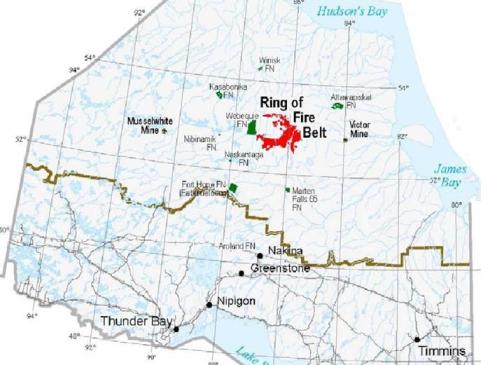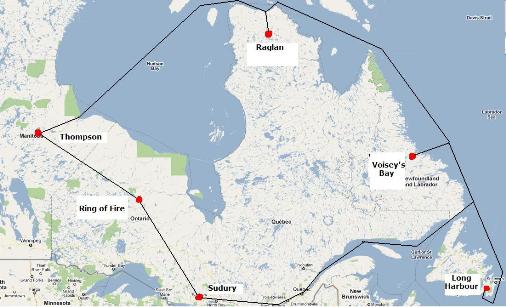Please note this article was originally published in Mining Markets in September 2009. Much has changed in the Ring of Fire since then and this article is posted here for archival reasons. – Stan Sudol
Noront Resources (NOT-V) president and CEO Wes Hanson says the global ferrochrome market is somewhere around 17 million tonnes, while his predecessor and Noront director, Joe Hamilton, believes it’s closer to 12 million.
German firm Heinz Pariser Research is forecasting an average ferrochrome price of US$0.79 per lb. and US$1,600 per tonne until 2017. Raw chromite fetches US$200 per tonne.
With global demand of 14.5 million tonnes (the average of the earlier estimates), the global ferrochrome market is worth about US$23.2 billion. A 5% share of that market would be worth US$1.16 billion annually.
Some rough estimates put the chromite tonnage in the Ring of Fire well into the billions but it takes 2.5 tonnes of chromite to make 1 tonne of ferrochrome. And if you saturate the market with too much production early on, prices will sink and the financial models used to finance development would be rendered useless.

























